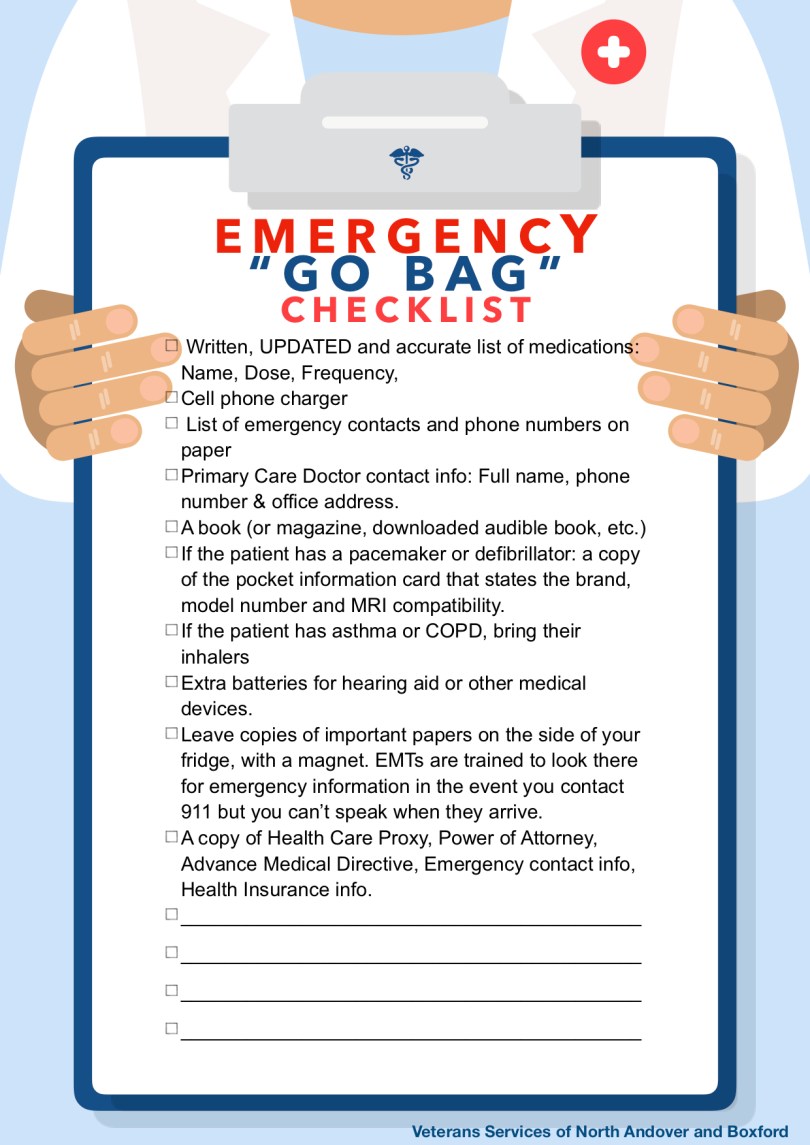These tips are worthwhile for all kinds of emergencies, so spending a few minutes now can help you for a long time to come!
Items for your “go bag”:
• Written, UPDATED and accurate list of medications: Name, Dose, Frequency, *Initials after the name of medication are important too, such as: XL, XR, LA, IR, ER, SR.
• Cell phone charger! Patients always have low cell phone batteries! You can be in the E/R from 6 hours to 48 hours!
• List of emergency contacts and phone numbers on paper! If the patient is unconscious and the phone is locked or the battery is dead, hospital staff will need this.
• Primary Care Doctor contact info: Full name, phone number and office address.
• A book (or magazine, downloaded audible book, etc.) to read. I have yet to find a hospital with decent wi-fi.
• If the patient has a pacemaker or defibrillator: a copy of the pocket information card that states the brand, model number and MRI compatibility.
• If the patient has asthma or COPD, bring the inhalers! Hospitals are running out.
• Leave copies of important papers on the side of your fridge, with a magnet. EMTs are trained to look there for emergency information in the event you contact 911 but you can’t speak when they arrive.
• A copy of Health Care Proxy; HIPAA; Advance Medical Directive; Power of Attorney, Emergency contact info, Health Insurance info.
I thought this was some pretty useful information – things I know I wouldn’t have thought of. While I sincerely hope none of you need it, I know I plan on preparing a go bag at home. Better to be prepared.


